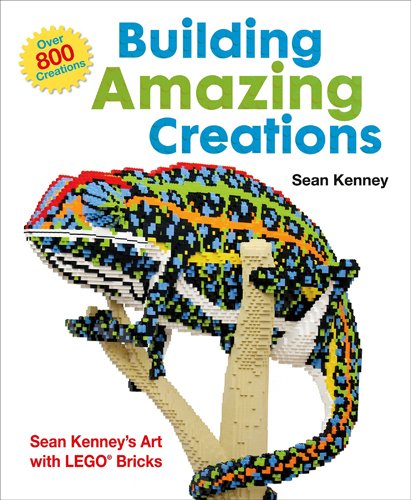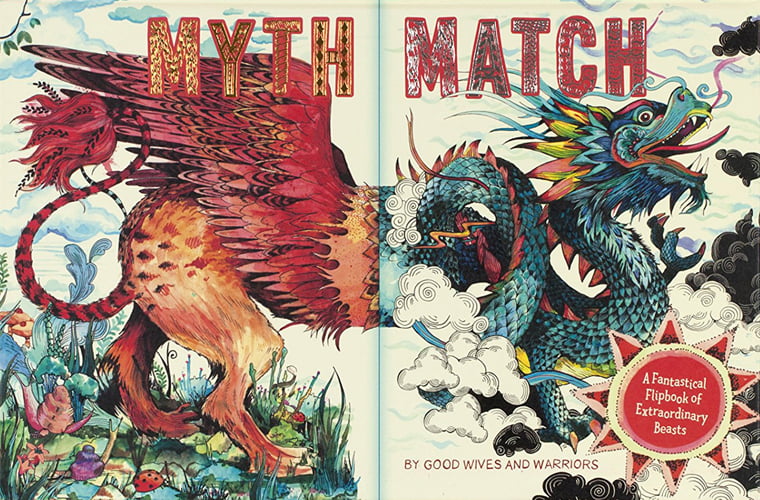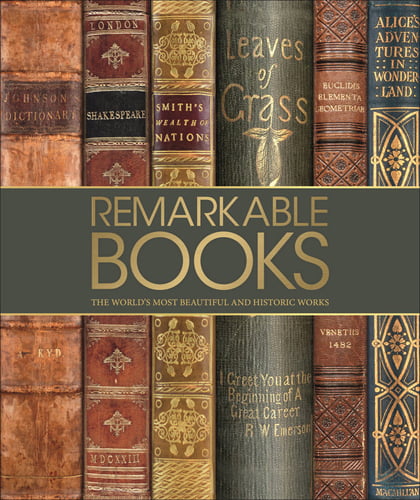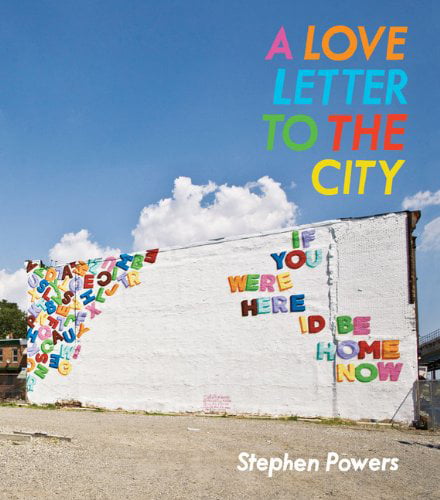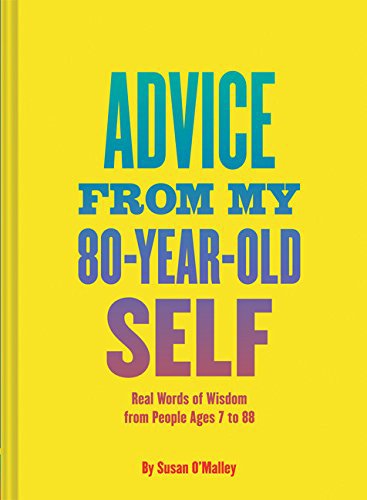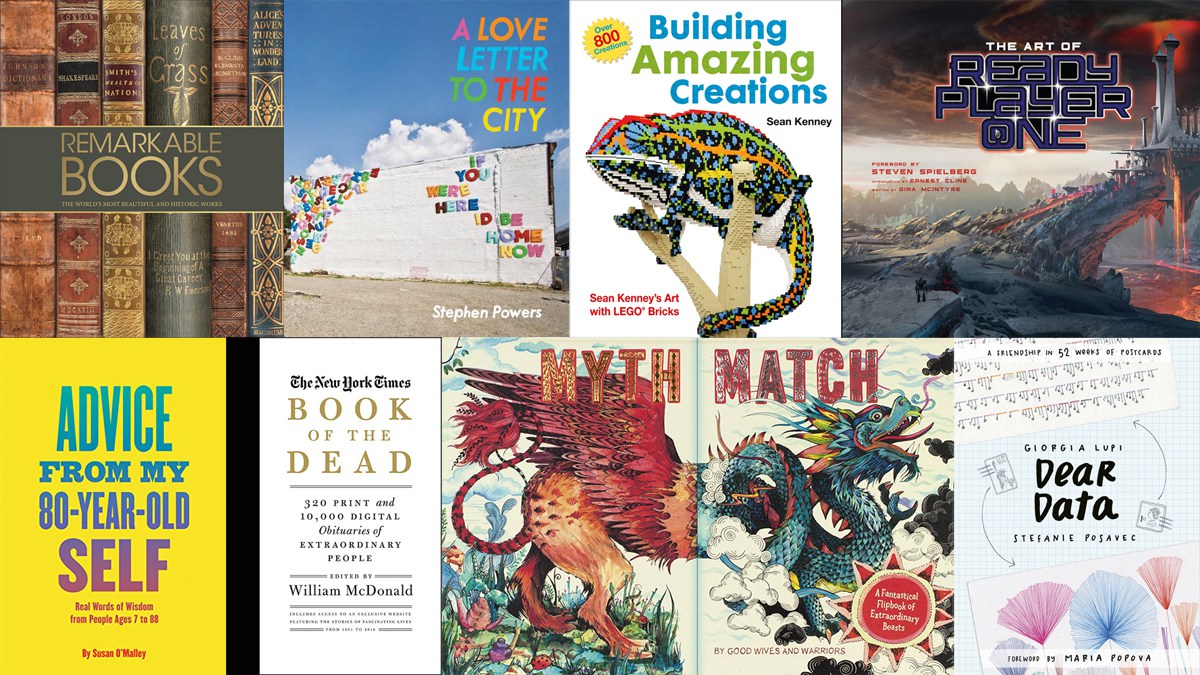 Today’s Stack Overflow is all about art books—movie art, poster art, LEGO art, and more. Many of these are coffee table books (do we still call them that?): oversized hardcovers that would be great on display, the sort of books that you usually browse through rather than reading straight through.
Today’s Stack Overflow is all about art books—movie art, poster art, LEGO art, and more. Many of these are coffee table books (do we still call them that?): oversized hardcovers that would be great on display, the sort of books that you usually browse through rather than reading straight through.
And on that note, a confession: I haven’t read all of these books from cover to cover, though I have finished several of them. I generally try to post just about books that I’ve finished, but some of these have been on my stack awaiting completion and I’ve decided I should just go ahead and share them with you now, and then continue enjoying them on my own time later.
The Art of Ready Player One by Gina McIntyre
Ready Player One or not, there’s no question that it was visually astounding. Half of the movie took place in a dystopian real world, and the other half in a utopian virtual world, both of which are quite different from our own reality.

The Art of Ready Player One digs into the design of both worlds: the trailer stacks in Wade’s real world (which were actually built on set at the Warner Bros. Studios in Leavesden), the design of the OASIS and the various worlds that avatars can visit. There are details about the tech used in the world, the avatar designs, the vehicles, and the film-within-a-film homage.

The book does have text, including interviews with those involved in the film, so you get to read about some of the inspirations for things like the look of Castle Anorak or the war room at IOI. But, as you might expect, the bulk of the book is about the artwork. I particularly like the fact that there are often final film stills included so that you can see the concept art and the final appearance side by side, something that is often omitted from “art of” books. One thing that I did find myself wishing for was some more reveals of Easter eggs hidden in the film—the sorts of things that zip by too quickly for you to see on-screen. But I’m sure there will be plenty of lists and screen-caps of those on the internet once the movie is out on Blu-ray, so perhaps it wasn’t necessary to put them into the book.
The book does include spoilers for the film, so I won’t go into too many details, but it’s not a book you’ll want to flip through if you haven’t seen the movie yet and don’t want to know the surprises ahead of time. Whether you’re a fan of Ready Player One or you just love “art of” books, you’ll have fun paging through this one.
Building Amazing Creations: Sean Kenney’s Art with LEGO Bricks by Sean Kenney
Sean Kenney is a LEGO artist who has exhibited his sculptures all over the world. I mentioned him way back in 2010, writing about his kids’ book Cool Robots, and he’s had several other books since then featuring some of his smaller creations. This book focuses more on his oversized projects, though there are still plenty of tiny builds, too.
 The book is broken up by subject: animals, architecture, vehicles, household objects, and so on, and there are plenty of photos of both the finished sculptures and the process of making them. You get to see how he sketches ideas, tries out prototype builds, and even how the sculptures are packed up and set up for exhibitions. There’s a good bit of humor, too, as Kenney and his assistants often appear in the photos with the sculptures, making goofy faces or acting out scenes.
The book is broken up by subject: animals, architecture, vehicles, household objects, and so on, and there are plenty of photos of both the finished sculptures and the process of making them. You get to see how he sketches ideas, tries out prototype builds, and even how the sculptures are packed up and set up for exhibitions. There’s a good bit of humor, too, as Kenney and his assistants often appear in the photos with the sculptures, making goofy faces or acting out scenes.
 Much of Kenney’s work has a message to it: one of the larger exhibitions was Nature Connects, about the interconnections between humans and nature, and consists of many plants and animals. He has also had sculptures that promote cycling over cars. His Cool Robots book was influenced by watching Wall-E, when he realized that he didn’t want robots that were covered in guns, but wanted instead to have robots that make life better.
Much of Kenney’s work has a message to it: one of the larger exhibitions was Nature Connects, about the interconnections between humans and nature, and consists of many plants and animals. He has also had sculptures that promote cycling over cars. His Cool Robots book was influenced by watching Wall-E, when he realized that he didn’t want robots that were covered in guns, but wanted instead to have robots that make life better.
Building Amazing Creations is a big coffee table book, one that you can just flip around in to admire the pictures, but I also enjoyed reading it from cover to cover. It really lets you see what’s at the heart of Kenney’s art.
Myth Match by Good Wives and Warriors
This oversized book includes 64 mythological creatures from many different cultures, each gorgeously illustrated … and cut in half, so that you can mix and match to create your own beasts. The name and three-line description of each creature spans the cut, so that when you make a new creature, it has a new split name and a mixed description as well. The book uses a spiral binding, so younger kids may need a little supervision while flipping the pages.

It reminds me of the Crocopotamus board book (mentioned in this Stack Overflow), but it has so many more pages, and the illustrations are beautifully detailed. I like the range of different art styles throughout the book, and there are many creatures that I’d never heard of before. What’s particularly fun is that many of these beasts are already mixtures of real animals, so combining them makes them extra-chimeric.
Remarkable Books by Father Michael Collins et al.
This huge volume from DK Publishing is a book-lover’s dream. It’s a tour of many amazing books from history—most of them are known for their cultural and literary significance, but many are also remarkable physical artifacts as well. There are books of religion, science, fiction, and art. Each entry has gorgeous photographs of the books (and sometimes related materials), along with plenty of information about what makes the book important.

Right: Book of Kells by Irish Columbian Monks. Credit: Courtesy of The Board of Trinity College, Dublin.
The book is arranged in chronological order, starting with ancient scrolls like the Egyptian Books of the Dead and the Dead Sea Scrolls, moving to bound books, then printed books, and on into the modern day with things like Penguin’s first 10 paperback books and Mao’s little red book of quotations. At the end of each section there’s also a “directory” section that includes brief summaries of even more titles that didn’t have in-depth entries. While there does seem to be a lot of western history represented in the selections, there are also some titles from other cultures included throughout.
I’ve paged through the entire book, though I haven’t stopped to read everything yet, but already I’ve discovered a lot of fascinating facts and learned about many books that I didn’t know about. I’ll mention just one favorite that I learned about: Robert Hooke’s Micrographia, published in 1665, was the first book about microscopy. It included beautiful copperplate engravings by Sir Christopher Wren of things like fleas that most people had never seen up close before, and the illustrations were so large that they folded out of the book.
The New York Times Book of the Dead edited by William McDonald
Speaking of remarkable books (and books of the dead), this hefty tome contains hundreds of obituaries of notable people, all from The New York Times from 1851 to 2016. Okay, so this one’s is less of an art book, but it is still a thing of beauty, even though it’s mostly text with black-and-white photographs, simply because of its contents.
The obits are organized by category: political leaders (both American and worldwide), people known for their infamy or their causes, writers, actors, musicians, athletes, and so on. McDonald, the obituaries editor, notes in his introduction that those included in the volume are “not necessarily more worthy of our esteem as human beings, just more newsworthy.” These are people who, for one reason or another, died famous. There are notable omissions—Vincent van Gogh and Emily Dickinson and Franz Kafka didn’t have obituaries published in The Times, because they weren’t well-known at the times of their deaths.
This book serves as an interesting historical record, because the accounts of each person in the book are contemporary. It’s not like reading a history book, in which you get the benefit of years or decades of hindsight, but a snapshot of that person’s significance as seen in the moment.
As impressive as this book is, though, it’s even more useful as a key: the physical book includes 320 obituaries, but it also gives you access to a website where you can access 10,000 obituaries online. That’s an amazing resource, and if you’re one of those people who loves reading the obits in the paper, then this will be a real treasure trove.
Dear Data by Giorgia Lupi and Stefanie Posavec
Giorgia Lupi and Stefanie Posavec have always been obsessed with data—collecting it and communicating it—and when they met each other at an arts festival, they decided to try an experiment. For a year, they sent weekly postcards to one another, each with a hand-drawn representation of some type of data about their lives. They would agree on a topic, but each came up with her own ways to track, record, and illustrate the information she collected.
This book reproduces each of their postcards, front and back: the illustration, and the explanation of how to read it. Captions provide a little more detail here and there, and there are some more details interspersed throughout the book, like the fact that Stefanie’s left-handedness resulted in a lot of smudges, or more detailed explorations of specific data points.

About a decade ago, I had come across Nicholas Felton’s “annual reports,” which are detailed, data-filled reports with graphs and charts and infographics based on his own life: where he traveled, what he ate, how he spent his time, and so on. I tried a data-collection experiment of my own, setting up a spreadsheet to track things like the weather, what time I got up and went to bed, how many books I read to my kids, how much laundry I did, and so on. I stalled out in mid-June simply because I felt I was spending more of my mental energy tracking what I was doing than actually doing things, but I still love the idea of it. (Posavec and Lupi actually know Felton, and he makes a few appearances in the book.)
Lupi and Posavec’s experiment is great because, although they were tracking data every week, it changed every week. One week they each tracked complaints; another, compliments. They tracked food and drink, physical touch, doors and spaces, sounds, clothing, laughter … and so much more. The resulting illustrations are wildly diverse and fun to look at. They both discovered the same thing I did—that when you start tracking your behavior, the tracking itself can influence it. And also that sometimes it can be hard to be honest about the results, too!
If you like information and data (and postcards!), you’ll be delighted by this book.
A Love Letter to the City by Stephen Powers
This one’s not new, and it’s not a huge coffee-table book, but I’ve just gotten around to it and it’s lovely. Stephen Powers is an artist who started off making graffiti in Philadelphia under the name ESPO. This eventually morphed into a sign-painting style, and he’s done many projects around the world, including in Philadelphia, Coney Island, Dublin, and more.
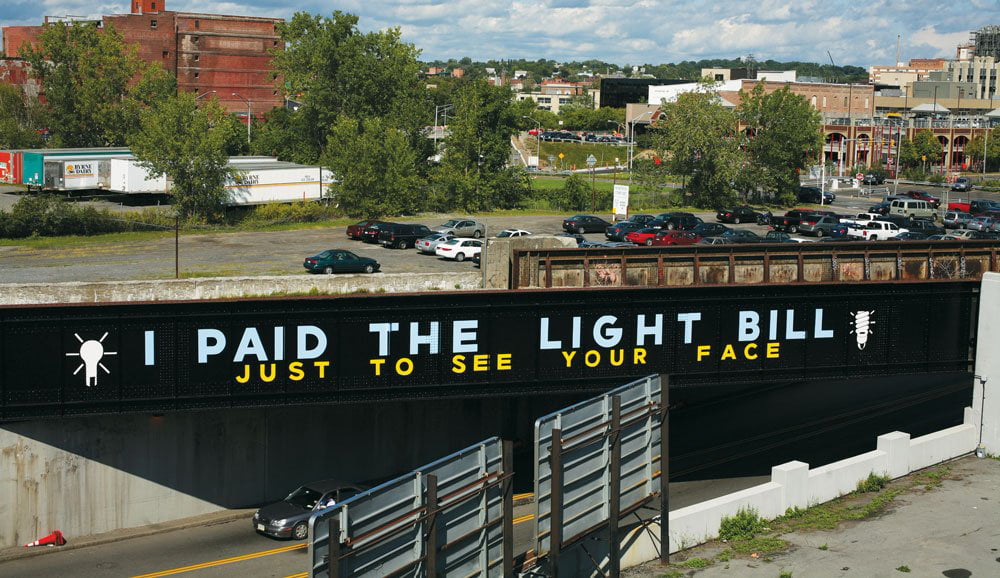
For these public art projects, he talks to people in the community and tries to capture their words and voices in these mostly text-based murals. Many of the murals are plays on words, and they’ll put a smile on your face.
The book includes both photos of murals and a lot of essays by Powers explaining how the projects came about, along with little sidebar interviews with other people who were involved. It’s a fascinating history that I knew nothing about, and it’s very cool to see how Powers’ painting, which was once seen as devaluing property, has now become something sought-after and celebrated. I also really liked the way Powers wrote, because the way he talks about the art isn’t dry and analytical—he’s deeply invested in the art and in how it fits in a community.
Advice From My 80-Year-Old Self by Susan O’Malley
When I was younger, I used to collect a lot of books of quotations and sayings. I loved paging through them and getting little bite-sized chunks of advice boiled down into single-serving nuggets, reading these gems that other readers had mined from larger texts that I hadn’t read yet. Looking back, some of these collections were pithy and cliched, but even so there can be some real truth and power in oft-repeated phrases.
Advice From My 80-Year-Old Self is a collection of text-based posters made by Susan O’Malley based on conversations with real people, responding to the question: imagine you could visit yourself at age 80, and ask for advice. What would 80-year-old you say to yourself? O’Malley asked people from ages 7 to 88, and then made these posters based on their words.

It is funny to think that so many of us imagine that when we’re 80 we’ll speak in fortune-cookie phrases, but there are some that stand out (usually from younger people): “Friends before screen time” and “don’t pull people’s hair.” But even though much of the advice is stuff you’ve probably heard, things that you’ve probably seen on a bumper sticker or on an inspirational poster, these phrases can still serve as a helpful reminder to focus on the good things, try new things, and be hopeful for the future.
Sadly, O’Malley passed away unexpectedly shortly before the book was published, and her friend and collaborator Christina Amini provides an afterword telling a little more about O’Malley and her ability to focus on the important things in life. This book might help you do the same.
Disclosure: I received review copies of these books.

